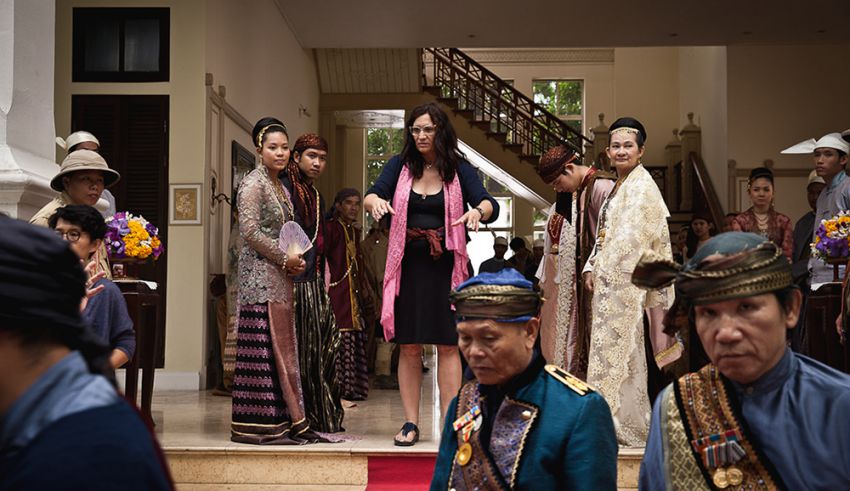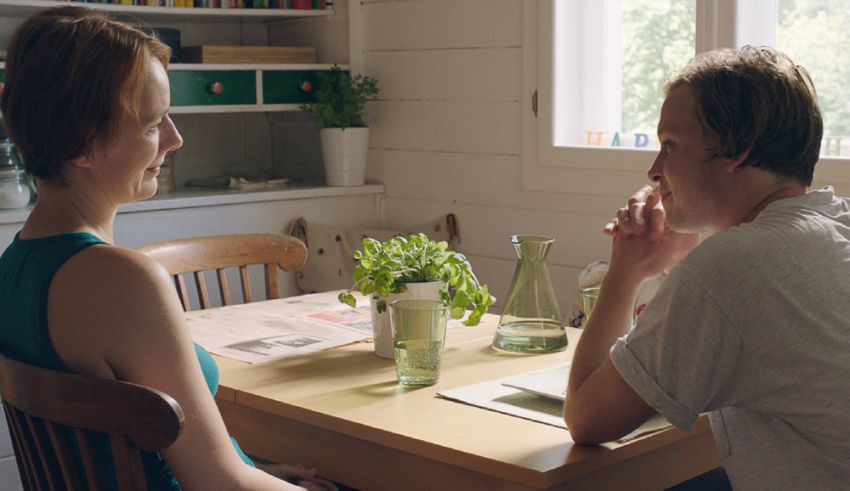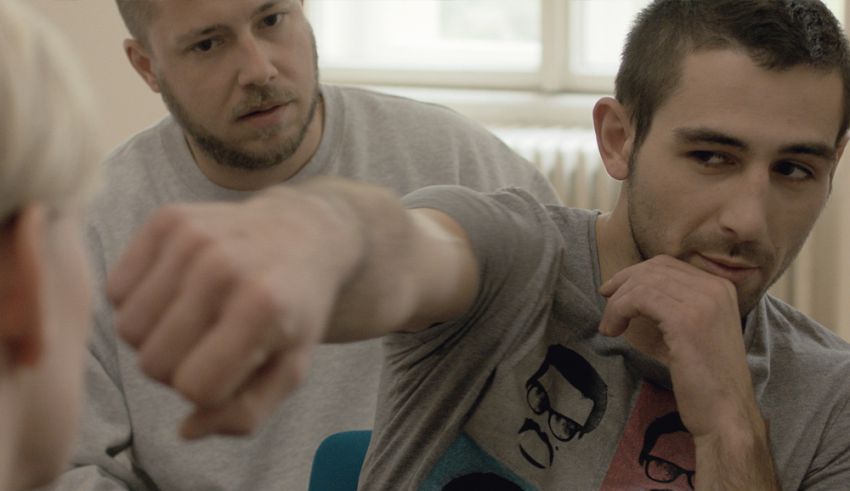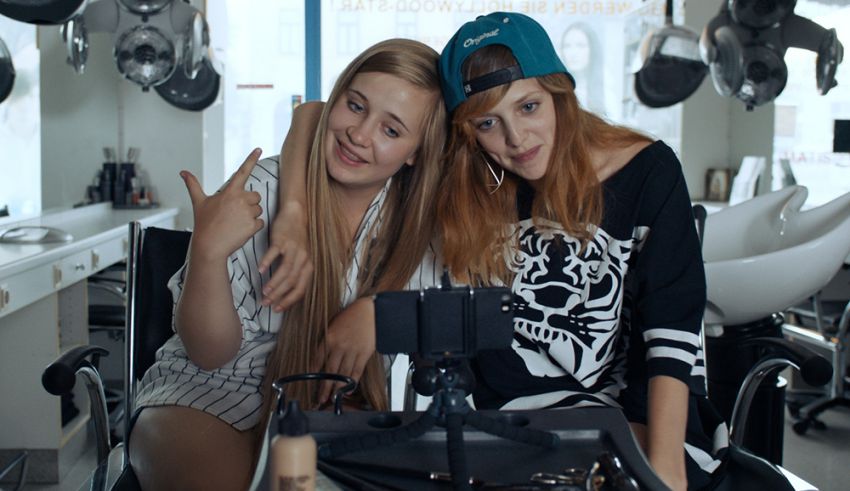Sabine Derflinger was the first woman to direct an Austrian episode of the long-running crime series Tatort, her own television series Vorstadtweiber is going from strength to strength, and she is the recipient of numerous honours such as the Grimme Award and the VFF TV Movie Award of the Munich International Film Festival. The Upper Austrian director is also a graduate of Film Academy Vienna. Jannis Lenz, on the other hand, is currently still a student at the Film Academy, but he can likewise look back on several awards. Above and beyond their vocation, these two filmmakers also share two other things: a great love of cinema and the individuality of their filmic handwriting.
The latest honour for Sabine Derflinger came just recently in Munich for an episode of the popular Austrian series Vorstadtweiber: the German Directors Award Metropolis is an industry award that represents a very special bit of recognition for the work of this versatile director, who’s at home in a great many genres. Her oeuvre includes documentaries like Schnelles Geld (2004) and Hotspot (2011), the latter of which features a project for long-term unemployed individuals; television work including the Tatort episodes Falsch verpackt (2011) and Borowski und das Meer (2013) as well as episodes of the ORF series Vorstadtweiber; and feature films such as Vollgas (2001), Tag und Nacht [Day and Night] (2010), and Dämmerung über Burma [Twilight over Burma] (2014).

Derflinger values all of these genres highly – though one advantage of TV, she says, is that it lets her develop her characters over the course of a show’s narrative: “You seldom have this opportunity in movies – which is why it would actually be wonderful to be able to include characters from series in cinematic productions.” On the other hand, of course, TV work takes place under difficult conditions, with short production phases and tight budgets. The dedicated director strives to counter these difficulties with her own highly individual handwriting, which is indeed recognisable in her other output, as well: “I give up control,” she says. What this means is that she prepares every shoot very well but then gives those involved great creative latitude: “My method is to allow people a huge degree of freedom so that they can bring all their inputs to the table and, out of this freedom, give rise to something different, something unusual.”
Grand Cinema
Despite loving all of the areas in which she works, when asked what she’s most fond of, she responds that cinema in the grand style is dearest to her heart: “I love grand cinema – big films and opulent settings. I felt that way once more – quite strongly, in fact – during our filming work for Dämmerung über Burma.” This movie, in which the daughter of an Austrian forester marries a Burmese Shan prince, becoming a princess herself and subsequently being threatened by a military putsch, was filmed by a team of 150 individuals: “I really did like that.”
To the Moon
The 53-year-old director Sabine Derflinger discovered her love of film quite early in life. She still remembers a time when saying she wanted to become a director “was tantamount to saying I wanted to fly to the Moon.” Aside from the difficult situation of being a young woman in what was then still a very maledominated film industry and training situation, the director remembers her time at Film Academy Vienna above all for the artistic freedom she enjoyed and for the experience working together with her colleagues. What’s more, her Film Academy days made possible a process of searching and development, “looking for my own potential, my own identity,” as well as encounters with people knowledgeable about cinematic history. Her advice to young directors is to watch lots of films and to refrain from trying to please everybody all of the time: “Only one person can be the creative leader,” she says, so it’s essential to be secure in one’s own method of working and one’s own handwriting.
Derflinger sets great store in supporting and showing solidarity with women in the film industry, and her diverse activities to this end were recognised with the Vienna Women’s Award in 2012.
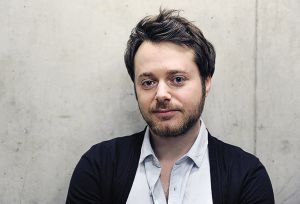
Jannis Lenz, born in 1983 and a current Film Academy Vienna student, also loves cinema. His short films and video installations Freistil (2014), Daheim und Dazwischen (2014), Schattenboxer (2015), and Schwerelos (2016) have brought him success at international festivals, and he just recently received a START grant of the Austrian Federal Chancellery.
Parkour
The young German’s nascent but successful career as a director has some surprising roots: “As a teenager, I started doing parkour [running urban obstacle courses – Ed.]. In that sport, a lot of exchange takes place via videos, so I wanted to make some, too.” This period saw him do an internship at a production company where he had the opportunity to learn video editing. In the process, he discovered his passion for filmmaking. Lenz eventually decided to study in Vienna, “a great city with tons of possibilities”, at first pursuing theatre, film, and media studies (where he was introduced to the history of film) and then transferring to Film Academy Vienna. “It’s a good place to experiment and get advice, help, and feedback from lots of competent people—including but not limited to instructors. I like to seek out their opinions, but I don’t want to lose my own gaze, either, since it’s ultimately me who has to stand behind my films. And I think it’s only possible to find your own way by trying things out and failing.”
An Organic Process
Trying things out and failing, overcoming obstacles: these are the things that, for Jannis Lenz, parkour and filmmaking have in common. “Parkour is a lifestyle where you view obstacles not as hindrances, but as opportunities.” And in filmmaking, he says, one is also frequently confronted with obstacles that prevent immediate realisation of one’s filmic vision. “That’s an interesting process for me, and in terms of learning to handle failure, parkour was a pretty good teacher.”
Over the years since then, this process has allowed Lenz to develop his own unmistakable style. Authenticity, credibility, and a good story are just as important to him as his characters: “I do a lot of work with lay actors where I try to have them do on camera the things they do in their private lives.” An example of this, he says, is his film Schattenboxer [Shadow Boxer], in which a young kickboxer goes through anti-violence coaching in order to avoid doing time in jail. “I create an environment for the actors, set up a fictional framework, and plan the camerawork.” The project then grows continually, he says, with new situations and/or lines arising on their own. “It’s fascinating for me, because I experience it as an organic process that feels real to me even while it’s still being worked on.”
Cinema and YouTube
Though he’s a passionate filmmaker and moviegoer, Jannis Lenz is also interested in other forms of narration. In his most recent project Wannabe, he approaches the YouTube phenomenon by uniting the media of cinematic film and YouTube in a refined manner. This feature-length work follows young Coco on the way to realising her dream of becoming a YouTube star, with his viewers seeing the results of Coco’s efforts in the corresponding YouTube videos. “I’ve tried to do Wannabe in such a way that it brings both worlds together, because I think it’s important that the two things move toward rather than away from each other,” hints Lenz at the future of movies – and, perhaps, of his career.
Links
- YouTube channel “Coco Channel” of Jannis Lenz’ film project “Wannabe”: www.youtube.com/coco-channel99
- Website of Sabine Derflinger: www.derflinger.org

